D’Addario might not be the first brand you think of when it comes to woodwind accessories but they’re certainly a brand to try!
You probably associate D’Addario with guitar strings, namely their popular NYXL strings. But you might be familiar with some other D’Addario products without realising it. I’m here to give you the lowdown on D’Addario woodwind accessories…
Why D’Addario?
 Before we dive into D’Addario reeds and mouthpieces in more detail, it might be worth looking at what makes D’Addario products so special, regardless of the product you go for.
Before we dive into D’Addario reeds and mouthpieces in more detail, it might be worth looking at what makes D’Addario products so special, regardless of the product you go for.
The overall message from D’Addario is this – consistency. D’Addario pride themselves on having some of the tightest tolerances in the industry. This ultimately means for you, as a player, there will be minimal differences between mouthpieces and reeds.
But why is this so important? When you buy a box of reeds, how many of them are suitable? It certainly isn’t all 10! Even in a box of reeds that are all the same strength, there are some that are too hard or too soft, and then there are your ‘Goldilocks’ reeds that are just right.
Reeds are ultimately made from organic material and, therefore, have varying compositions. D’Addario do their best to minimise these differences as much as possible, so you get more ‘Goldilocks’ reeds and save money – ching ching!
Talking about the raw materials for their reeds, D’Addario use two different plantations – one in France and one in Argentina. The reason for this is pretty clever. Cane can only be harvested in winter, so having one plantation in the Northern Hemisphere and one in the Southern Hemisphere means a near-endless supply of raw material.
The journey of a reed is probably longer than you think. In fact, the cane that D’Addario uses is two years old before it’s harvested. Even the harvesting process can be pretty long before the cane is shipped to the D’Addario factories.
A species of cane called Arundo Donax is used and the growth is carefully monitored to ensure consistency. The cane then goes through a fully automated process which turns it into the final reed.
As I mentioned, the tolerances are extremely tight, so the reeds have to be within 0.002” of the strength required, which is very minute and stricter than a lot of other manufacturers! Because of this, you can be sure that your reeds will be consistent.
At any point through this automated process, the reeds can be ejected if they don’t meet the highest of standards – only the best for you!
Rico
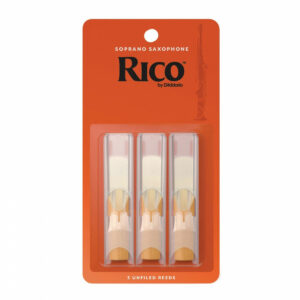 Rico reeds are known by pretty much all clarinet and saxophone players. They’re often the first reeds that beginners learn to play on. I remember my first clarinet lessons and my teacher getting out a tobacco tin with Rico reeds in it; I would pay her £1 and off I went!
Rico reeds are known by pretty much all clarinet and saxophone players. They’re often the first reeds that beginners learn to play on. I remember my first clarinet lessons and my teacher getting out a tobacco tin with Rico reeds in it; I would pay her £1 and off I went!
These reeds are also referred to as the ‘Orange Box’ reeds and have pretty much become the standard student reed.
Unbeknown to some, D’Addario acquired Rico back in 2004. So what does this actually mean for Rico reeds? Well, they just get better!
“My mission has been to ensure Rico makes the finest quality reeds. We’ve invested over $10 million in new technology, building a state-of-the-art reed-making factory for Rico. The result is that Rico now makes the world’s most consistent reeds.” – Jim D’Addario.
So, who would use Rico reeds, and why? Most players, to be honest!
Rico (and Royal) reeds are really easy to play; they’re designed to be free blowing and vibrate with minimal effort, which is why they’re a firm favourite amongst beginner players.
It doesn’t just stop there, though. A number of pro players such as Dave Koz, Bob Reynolds, and Mindi Abair all use Rico or Royal reeds. There is often a perception that Rico reeds are only for beginners – and nothing could be further from the truth.
Green reeds
Well…they aren’t the colour green. Rather, they’re organically produced.
Starting with the Reserve and Select Jazz ranges, these reeds are 100% certified organic. This is a brand promise that no pesticides, herbicides, chemicals, or synthetic fertilisers have been used at any stage, from the field to the point it lands with you.
“About seven years ago, I challenged our woodwinds team, particularly the agricultural staff that maintains our cane plantations, to convert all our growing and manufacturing processes to 100% Certified Organic practices. We have received and currently maintain official certifications across all facilities and processes and have ensured that the quality and consistency of our products have not experienced any negative side effects. If anything, we have improved the consistency of our cutting process and strength sorting capabilities.” – Jim D’Addario.
As well as this, the packaging materials have been reduced. The plastic reed holders have now been replaced by card holders, similar to their traditional packaging. They do have a thin, clear plastic wrapper on them for hygiene reasons and to protect them against any changes in weather conditions – but this is a much lower level of plastic, reducing the amount of waste going to landfill.
I recommend getting a reed guard. This will protect your reeds, keep them flat, and ensure they last as long as possible. And it’s not a single-use piece of plastic – I’ve had mine for years!
You can find more cleaning and maintenance equipment here.
Reeds for saxophone players
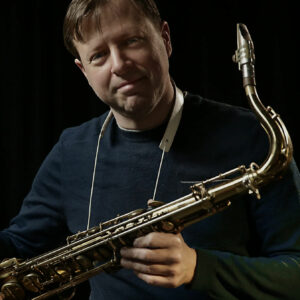 If you’re a saxophonist, the perfect reed for you depends on whether you’re more of a classical player or more of a jazz player (or somewhere in between). But what reeds are there other than the Rico and Royals?
If you’re a saxophonist, the perfect reed for you depends on whether you’re more of a classical player or more of a jazz player (or somewhere in between). But what reeds are there other than the Rico and Royals?
For the classically minded, the Reserve range of reeds is ideal. Typically, classical reeds have a thicker blank and spine, giving them dynamic flexibility and a range of tonal colours. They’re available for most major soprano, alto, tenor, and baritone saxophones.
Jazz players might want to check out the Select Jazz ranges. When playing jazz, or pop music, it’s good to have a bit more volume, especially if you’re competing with brass instruments, for example.
Select Jazz reeds give you some extra punch and projection. You can also achieve clear and crisp articulation thanks to the traditional tip. These come as either filed – meaning the reeds go through an extra cut – or unfiled. It’s all to do with preference – go for the one that feels best!
If you like synthetic reeds, Venn is definitely worth consideration. One of the newer synthetic reeds on the market, it’s the product of years of research and development, meaning it’s been carefully and scrupulously fine-tuned to perfection.
Venn is made from quite a complex material of co-polymers, longitudinal fibres, and real cane elements. This essentially means it combines synthetic and natural materials, ultimately giving you the best of both worlds.
You get a natural sound; longevity and durability courtesy of synthetic elements; and, thanks to the flexibility of cane, the response and articulation you have become accustomed to.
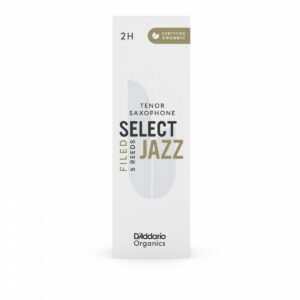 When analysing the sound of Venn reeds compared to other D’Addario reeds, the difference is minute. And D’Addario don’t just use empirical evidence to support this sound analysis, they do the geeky thing and use scientific evidence, which I really admire.
When analysing the sound of Venn reeds compared to other D’Addario reeds, the difference is minute. And D’Addario don’t just use empirical evidence to support this sound analysis, they do the geeky thing and use scientific evidence, which I really admire.
There are a few other ranges of reeds that are worth a mention, too.
La Voz reeds are pretty similar to Rico and Royal but have a bit of a thicker spine that’s ideal for jazz applications.
Plasticover reeds are also very much like Royal reeds. These are essentially a Royal reed that’s coated in plastic – but why? It makes them ideal for playing outside. Thanks to the plastic coating, the humidity and elements won’t affect the reed as much as they would a standard cane reed.
Hemke reeds were designed with the late Fredrick Hemke, a renowned classical saxophonist and teacher who wanted a warm and sophisticated tone. Although they’re made for a classical sound, jazz players after a darker tone also favour these.
Shop now | D’Addario saxophone reeds
Reeds for clarinet players
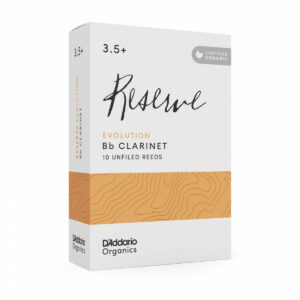 Similar to saxophone reeds, Reserve reeds for the clarinet are split into three different varieties: Reserve, Reserve Classic, and Reserve Evolution. But how are they all different?
Similar to saxophone reeds, Reserve reeds for the clarinet are split into three different varieties: Reserve, Reserve Classic, and Reserve Evolution. But how are they all different?
Reserve reeds are a good starting point. They’re a traditional cut reed that gives a focused, quick response, and they’re similar to another popular brand of reeds that begin with ‘V’.
If you’re after a warmer sound, with a bit more tonal depth and easier articulation, the Reserve Classic is worth considering.
For even more warmth, you might be interested in the newest of the Reserve reeds, the Reserve Evolution range. They have the thickest blank which gives a warm, well-rounded tone and increased projection, helping you stand out a bit more. These have to be my favourite of the Reserve ranges.
Other reeds that are worth mentioning are the Mitchell Lurie reeds, great for big bands and wind band settings. They give you a warmer tone thanks to the thick blank, whilst a thin lip delivers a great response.
Finally, the Grand Concert Select is suited to more advanced students looking for tonal depth. Again, there are also the Plasticover and La Voz ranges.
Shop now | D’Addario clarinet reeds
Mouthpieces for saxophones
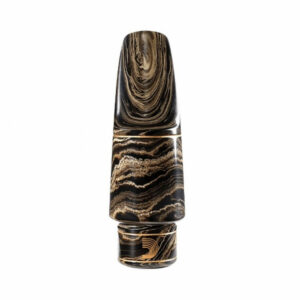 Like the reeds, saxophone mouthpieces are split into different series – Select Jazz for popular styles and Reserve for more classical.
Like the reeds, saxophone mouthpieces are split into different series – Select Jazz for popular styles and Reserve for more classical.
All D’Addario mouthpieces are made from a solid rod of ebonite and are milled, rather than moulded, meaning they’re carefully crafted within the tolerances for excellent consistency.
Depending on whether you play alto or tenor, the Select Jazz mouthpieces are modelled on different iconic mouthpieces. The alto is based on a vintage Meyer mouthpiece and the tenor is based on one used by Freddie Gregory. They’re designed for versatile players and are ideal for jazz and pop.
It’s great to get that vintage sound at a fraction of the cost of these iconic mouthpieces.
Better still, they’re available in a range of different tip openings – the right one for you comes down to personal preference – and a sandstone marble finish.
These sandstone marble finish mouthpieces are really quite stunning! Each one is unique thanks to the way the marbling is injected into the ebonite rod. As well as making a visual difference, this process results in a sonic difference too. It makes the mouthpieces a little denser and brighter in tone! So, you can stand out with your mouthpiece too!
In the Reserve range, there are three different models for the alto mouthpiece, ideal for professional or advancing classical saxophonists. They give you the projection you need as a soloist, and they’re perfect for playing concertos if that’s your thing.
These Reserve mouthpieces offer a wide dynamic range and a darker sound that’s suited to classical players. There’s one mouthpiece for the tenor saxophone which shares similar characteristics to the alto.
Shop now | D’Addario saxophone mouthpieces
Mouthpieces for clarinets
 In total, there are two different styles of D’Addario clarinet mouthpieces – the Reserve and the Reserve Evolution.
In total, there are two different styles of D’Addario clarinet mouthpieces – the Reserve and the Reserve Evolution.
Reserve mouthpieces are designed for that vintage 1920s sound but with the characteristics of a more modern mouthpiece.
It’s worth noting that six models are available with two different pitch systems – some for European pitch and some for American pitch.
On the other hand, Reserve Evolution mouthpieces are more modern and offer a warmer sound, similar to the Reserve Evolution reeds. These give greater flexibility over a range of musical styles.
The Evolution mouthpiece is also available in the marble effect and I must admit, I fell in love with it, so I’m definitely going to invest in one!
Shop now | D’Addario clarinet mouthpieces
Key considerations
When you look to upgrade your mouthpiece, it’s worth experimenting with your reed choice too. Different mouthpieces have different tip openings (the gap between the tip of the mouthpiece and the tip of the reed).
Essentially when you tongue, you push the tip of the reed flat against the mouthpiece and this causes the sound to stop.
With a more open mouthpiece (one with a bigger gap) the reed has further to travel, so a softer reed is ideal. Conversely, a harder reed doesn’t have as far to go.
Generally, more closed mouthpieces are suitable for classical players and a more open tip is for jazz players. Keep in mind, however, that the more open the tip is, the more experience you need to tame it.
A common misconception is that you should start on Rico reeds and then progress to another brand. I hope that I’ve demonstrated that D’Addario has a wide range of different reeds (and mouthpieces), offering something for every player.
If you still can’t decide what reeds are best for you, check out the Reed Finder on the D’Addario website.
Have fun experimenting!

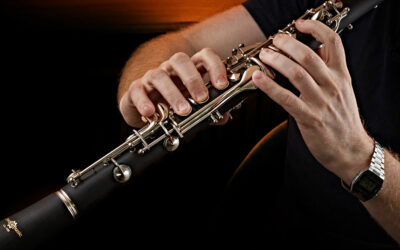



0 Comments